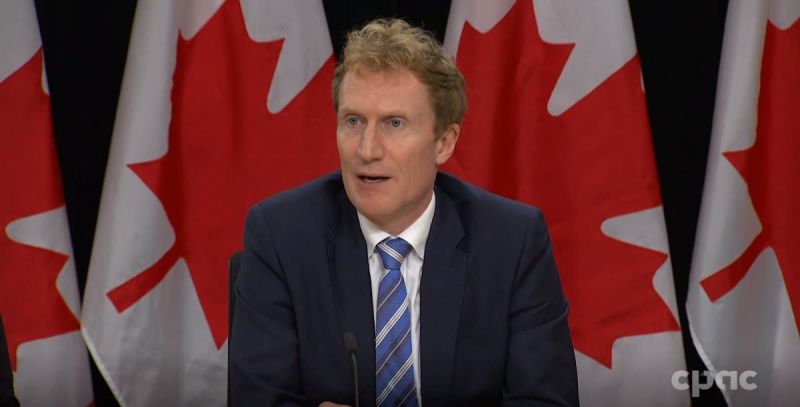Minister Miller reveals strategy to improve Canada’s immigration system
Today, Canada’s Immigration Minister, Marc Miller, outlined intentions to reform the country’s immigration system.
Miller stated that Immigration, Refugees, and Citizenship Canada (IRCC) has been working with stakeholders and the public all year to design the future of a stronger immigration system. As a result, IRCC is incorporating this feedback into its new immigration strategy, An Immigration System for Canada’s Future.
He admitted that Canada’s immigration system has not been particularly responsive in recent years, something IRCC wishes to address.
Following Millers’ announcement, IRCC issued its new strategy report to keep stakeholders updated on the department’s plans.
IRCC is working on issues such as better aligning labour market needs with the immigration system, modernizing the immigration system to allow newcomers to easily submit and track their applications digitally, improving IRCC’s application processing service standard, assisting smaller communities in attracting and retaining more newcomers, and promoting francophone immigration in communities across Canada.
In the report, IRCC identifies three pillars and a number of initiatives to adopt in order to sustain Canada’s status as a preferred destination for newcomers:
- Create a more welcoming experience for newcomers
- Align immigration with labour market needs
- Develop a comprehensive and coordinated growth plan
Make it easier for newcomers to settle in
According to the department, it is aiming to provide a pleasant and user-friendly experience for all who utilize its services. Digital Platform Modernization (DPM), a new operating platform, is critical to these initiatives.
According to IRCC, the new digital platform will increase efficiency and allow it to accommodate the unprecedented demand to work, study, visit, and reside in Canada. Some of the platform’s new features will include an online single window into immigration programs, improved automation, and digital self-service.
The department hopes the DPM will speed up application processing and improve program integrity, while making the immigration journey clearer and more human focused.
Align immigration with labour market requirements
Minister Miller emphasized the necessity of ensuring that immigration fits Canada’s labour market needs during his speech.
To help attract and retain talent from all in-demand areas, including construction and healthcare, IRCC says it must identify the essential talents, newcomers who have these skills, and how to best connect them to available positions in Canada. It states that this includes making it easier for international students and temporary workers with in-demand skills to stay in Canada.
According to the IRCC research, one technique of luring top talent is the implementation of category-based Express Entry rounds of invites for candidates with work experience in critical industries.
In addition, IRCC is establishing a new position of Chief International Talent Officer to integrate Canada’s immigration policy with a long-term skills and labour strategy.
The Officer will be in charge of gathering information regarding the talents that Canada will require in the future, as well as ensuring that immigration better fits with Canada’s labour market and sectoral strategies.
Create a comprehensive and coordinated growth strategy.
According to IRCC, in addition to luring top talent, they must consider assistance and settlement services for newcomers while balancing the demands of Canadians. This includes things like housing and healthcare.
Minister Miller speculated that some newcomers leave Canada due to difficulties with housing and getting their international credentials recognized.
According to IRCC, national and regional immigration programs like the Atlantic Immigration Program (AIP) are critical to sustaining growth and supporting the Canadian economy.
The agency recognizes a growing need to assist both permanent and temporary residents. According to the report, IRCC will investigate further alternatives for developing an integrated strategy to manage housing, health care, and infrastructure across federal government departments, as well as in close partnership with provinces, territories, and municipalities.
Restructuring of the IRCC
Earlier this year, IRCC commissioned a report from former immigration Deputy Minister Neil Yeates to assess the present structure of IRCC and whether it is helpful in assisting IRCC in fulfilling its goal. Yeates, as a former Deputy Minister, was formerly the department’s most senior civil officer and was well-versed in how IRCC is run.
The recommendations in Yeates’ study included reorganizing the department into a business line-based organization, overhauling the governance system, implementing a stronger system for planning and reporting, and fostering a supportive culture inside IRCC.
Current Deputy Minister Christiane Fox was interviewed about the findings by journalist Paul Wells, and she stated that beginning in June 2023, she began to progressively make reforms within the department.
She stated that IRCC is implementing some of the recommendations. For example, it is now organized around business lines. This means that IRCC workers will be dispersed among the many clients that the department serves in order to be more responsive to global developments.
Furthermore, a recent audit conducted by Canada’s Office of the Auditor General (OAG) determined that IRCC’s backlog of permanent residence applications was unacceptable in 2022 and offered suggestions to process applications more effectively in order to maintain service standards.
These recommendations included examining service standards (the time it takes IRCC to process an application) and modifying the workload in regional offices.
The Immigration Levels Plan is scheduled to be released on November 1st.
The statement today comes ahead of the release of the Immigration Levels Plan 2024-2026.
Each non-election year, the Canadian government is constitutionally mandated to release the plan by November 1st. The plan details the amount of permanent residents that Canada intends to accept from all classes during the next three years, as well as the permanent resident levels by program.
Minister Miller recently informed the Standing Committee on Citizenship and Immigration of the Canadian Parliament that Canada’s high immigration targets must be maintained. As a result, IRCC will very certainly continue to have a heavy workload while undergoing structural changes.
#IRCC



